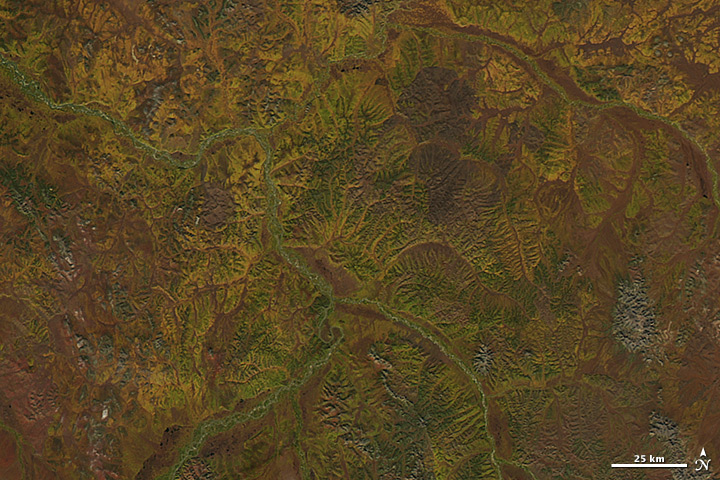


The Moderate Resolution Imaging Spectroradiometer (MODIS) on NASA’s Aqua satellite acquired this image showing fall foliage along the Kolyma River in eastern Siberia on September 9, 2015. The lower image shows a broader view. Notice how no green vegetation remains visible in the northernmost part of the image. Meanwhile, valleys and other low-elevation areas still have plenty of green farther to the south.
In autumn, the leaves on deciduous trees change colors as they lose chlorophyll, the molecule that plants use to synthesize food. However, chlorophyll is not a stable compound and plants have to continuously produce it, a process that requires ample sunlight and warm temperatures. When temperatures drop and days shorten, levels of chlorophyll do as well.
Chlorophyll makes plants appear green because it absorbs red and blue sunlight as it strikes leaf surfaces. As concentrations of chlorophyll drop, the green fades, offering a chance for other leaf pigments—carotenoids and anthocyanins—to show off their colors. Carotenoids absorb blue-green and blue light, appearing yellow; anthocyanins absorb blue, blue-green, and green light, appearing red.
NASA image by Jeff Schmaltz, LANCE MODIS Rapid Response. Cropping and caption by Adam Voiland.